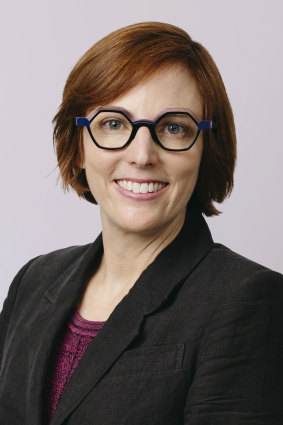This was published 5 months ago
‘New rhythm’: the boomers who are redefining retirement
Brought to you by Aware Super
By Anders Furze
For decades baby boomers have had an outsized impact on society, so it’s only natural that they are now reimagining what it means to retire as well.
“Retirement is no longer a ‘gold watch moment’,” says Jacki Ellis, head of retirement at Aware Super. “It’s much more of a winding road these days. Increasingly, we’re seeing that more people are looking to find a new rhythm in retirement, which is changing what retirement looks like.”

Up, up and away … the baby boomer generation is redefining retirement. Credit: Getty Images
Australia’s retiree population is growing, and it’s estimated to reach 15-20 per cent of the overall population by 2030. That amounts to around 320,000 Aussies retiring every year, bringing some $86 billion in savings annually along for the ride.
For some retirees, it’s the perfect moment to leave the office behind, buy a caravan and never look back. But many are choosing to stay engaged in the workforce, whether by working a couple of days a week or volunteering.
Some retirees might find their passion and purpose in their career and don’t want to give that up. Others are reskilling into a different field altogether or stepping back from work to spend more time with adult children and grandkids.
“It’s about thinking through how you want to spend your time, and what will bring joy and meaning into your life,” Ellis says.

Jacki Ellis, head of retirement at Aware Super.
“Increasingly, we’re also seeing more Australians having a few goes at retirement. Our members are moving back and forth between retirement and working. It’s also a much longer period of time than it was in the past – around 25 per cent of our members are likely to live past 95.“
These more flexible approaches to retirement are being driven by a range of factors. Aussies are living healthier lives for longer, but the rising cost of living and a post-COVID-19 rethinking of what people want from life are also having an effect.
Nevertheless, while Australians’ super accounts are growing, a gender gap remains at every age group.
The median super balance for women is still substantially lower than for men, research from advocacy group Women in Super and consultancy Right Lane has found.
The gap was around $17,000 in 2019-20, or 25 per cent.
“There will continue to be gender inequity in superannuation savings for decades to come,” the report says.
“On current trends, it will take until 2070 for all cohorts of women to have the same median superannuation balance as men.“
Next year, super will be paid on top of the government’s paid parental leave scheme, a move that will “make a significant difference” for primary carers foregoing super while taking time out from work, according to Financial Services Council chief executive Blake Briggs.
“It plays a role in bridging the retirement savings gender gap and improving gender equality in Australia.”
Given the age of a one-size-fits-all retirement is all but over, it pays for retirees to think through their options.
Experts recommend taking stock of finances well before hitting retirement age and working through the financial impact of government benefits, including the age pension, and different tax incentives.
But in a sign that many people are not making the most of their super, research shows half of Australians have never accessed information about preparing for retirement.
“It’s concerning to see such a lack of engagement with information about retirement,” notes Mary Delahunty, chief executive of the Association of Superannuation Funds Australia (ASFA).
“It means many Australians may end up worse off than they should be in their post-working lives, simply because they haven’t been empowered with the relevant guidance.“
Aware Super’s Ellis says superannuation funds have a “huge role to play” in helping members think about the best strategy to set up their desired retirement lifestyle.
“I encourage all Australians to engage more with their super fund, and really make sure that they’re reaching out and seeking help, so they can start planning and have the chance to find a new rhythm in retirement for themselves.”